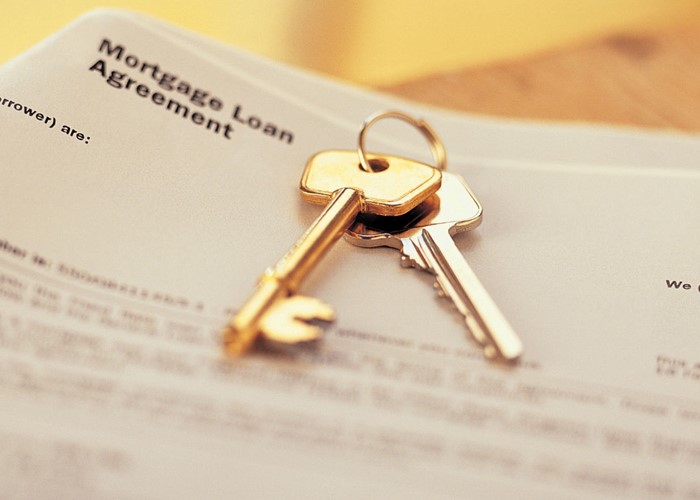The myth that it's tough to get a mortgage

Received wisdom says that it's still tough to get a mortgage, but is this really the case?
The credit crunch decimated the UK mortgage market, wiping out plenty of lenders and thousands of products from the market.
Many consumers now presume that it’s a real challenge to get a mortgage, and this perceived notion is widespread across the media. Lenders’ tight criteria are blamed for everything from the rental market boom to stagnant house prices.
But is the mortgage industry really holding back the housing market by stopping people from getting a homeloan?
Is there a mortgage drought?
At a recent mortgage conference the new Housing Minister Mark Prisk asked this very same question. He noted recent press reports of lenders accepting 80% of applications, which doesn’t exactly smack of a mortgage drought.
The figures he is referring to came from Nationwide, which said that the number of applications it actually accepts (eight out of 10) is far higher than consumers believe to be the case. In a recent survey only 40% said they thought they could access mortgage finance.
A clear gap has emerged between borrowers' perceptions of the market, and what lenders are claiming. The Housing Minister rightly questioned this gap and challenged the mortgage industry to “bust the myth that mortgages just aren’t available".
There’s no question that certain potential borrowers have been hard hit by the credit crunch, such as those needing self-certification mortgages, bad credit deals, or 100% mortgages. Bar a few specialist products these are all a thing of the past.
But what about the mainstream? Are we all being too pessimistic about our chances of securing a homeloan?
Open for business
The Council of Mortgage Lenders, unsurprisingly, reckons that the market is well and truly open for business. And it’s responded to the Housing Minister’s challenge to prove that lenders are actually lending.
It says that, despite the downturn, more than one million first-time buyers have entered the market since 2007 – meaning that more than one in 10 of all current mortgage holders have become homeowners in the last five years.
Sounds pretty impressive, but it’s probably fair to add that many wannabe homeowners have not been able to enter the property market due to tighter mortgage criteria. And it’s those wanting to borrow a large percentage of the property’s value who struggle the most.
The Government’s recently launched Funding for Lending scheme seems to be having an overall positive effect on mortgage availability, with some lenders offering best buy first-time buyer deals as a direct result of the funding, as we highlighted in Funding for Lending scheme already leading to cheaper mortgages.
Add in the NewBuy scheme, which enables borrowers to buy a newly built property with just a 5% deposit, and help for those with a small deposit seems to be slowly gaining momentum. Read What is the NewBuy scheme?
But what do the facts and figures show? Are lenders increasing the number of deals on offer to borrowers, and the amount they actually lend, or not?
The nitty gritty
Financial information site Moneyfacts has broken down the total number of available mortgages into different loan-to-value categories and this illuminates mortgage availability over the last five years for those with small and large deposits.
The number of mortgages available to those with a small deposit was decimated during the credit crunch. There were 829 90% mortgages available in 2007 and only 101 in 2009 when they bottomed out - so it was much more difficult to get a mortgage, and choice was limited.
However, numbers have steadily increased in the last three years and there are now 300 mortgages for those with a 10% deposit on the market. In other words, availability is still restricted, but it’s improving.
On the other hand if you have a large deposit things are just getting better and better, with the number of products rising over the last five years. If you have a 40% deposit there are now 489 deals available compared to just 23 in 2007, says Moneyfacts.
It’s also interesting to see how much lending is actually being done in the highest and lowest deposit brackets. In the second quarter of 2007 for example, 90% loan-to-value mortgages accounted for 5.7% of all lending – now it’s just 1%, according to the CML.
At the other end of the scale, the proportion of mortgages at 75% loan-to-value or less have risen considerably, from 47.6% of all lending in 2007 to 67.3% now.
Clearly there has been a big shift from higher to lower risk lending in terms of both the deals on offer and the actual mortgages being lent.
To be fair, this is to be expected, and given the criticism the mortgage lending industry faced following the credit crunch for irresponsible lending it would be worrying if it hadn’t moved down the risk curve.
Overall lending is still about half of pre-crunch levels, though it would be unfair to suggest that this is just a supply issue. There has clearly been a drop in demand too, due to economic worries and job insecurity, as well as a tightening of lending criteria.
There is one bit of good news. Average mortgage rates have tumbled for all borrowers, with the average 90% two-year fixed rate falling from 6.32% to 5.3% and 60% deals dropping from 6.35% to 4.03% in the last five years.
But with the base rate having been slashed to an all-time low, you wouldn’t expect anything less.
What about your experiences? There are no large scale statistics on applicants who have been rejected, or the reasons they couldn’t get a homeloan. Have you found it difficult to get a mortgage in the last few years?
Use lovemoney.com's innovative new mortgage tool now to find the best mortgage for you online
At lovemoney.com, you can research all the best deals yourself using our online mortgage service, or speak directly to a whole-of-market, fee-free lovemoney.com broker. Call 0800 804 8045 or email mortgages@lovemoney.com for more help.
More on mortgages:
Why I'm paying a huge mortgage fee
What is a shared ownership scheme?
What is a shared equity scheme?
What is the NewBuy scheme?
Bridging loans: pros and cons
How rows with your neighbours could hurt your house price
Dealing with letting agents
Dealing with estate agents
Buy a property without a deposit
What's your property worth?
How to beat Stamp Duty
Most Recent
Comments
-
Andy P & rojbalc: The risk is to the [B][I]lender[/B][/I], since should the mortgagor default, the level of debt the lender has against the potential value of the property asset, is greater with the initial 90% mortgage than with a 75% loan to value (LTV) mortgage. If this happens in the first 2-4 years of say a 25 year mortgage, then dependent upon the volatility of the housing market, were the lender to have to go to the unfortunate lengths of repossession, it may only recoup perhaps 80%-90% of the remaining mortgage debt, after costs. With the 75% LTV mortgage, as the debt was lower to start with, the differential between the debt and the property value is greater, so there is a greater chance the lender can recover 100% of the outstanding debt. Regrettably, it has little to do with the affordability factor when assessing the risk variables, albeit affordability is the cornerstone of quality lending. It is however the necessity when risk assessing the lend, to be satisfied that the individual(s) can repay and maintain such repayments and to do ones utmost to assist the individual(s) in maintaining suitable levels of repayments to that a default does not occur. The 'weighting' of the risk is understandably biased in favour of the lender, as after all, they are providing the funding. It's not the risk to the customer that is the point of concern from the article comment. The lower that risk, the better the deal generally provided.
REPORT This comment has been reported. -
@Andy: I agree that banks seem to assume a correlation between the % of your deposit and your ability to meet your monthly obligations, which doesn't necessarily follow. If I earn 100,000 GBP per month but have no savings for a deposit, the bank won't give me a mortgage... However, the reason it's seen as risky is because of the interest rate you pay on the mortgage. This will be higher for a 90% LTV compared to 75% one (for the same house). So yes, even in your example with two differently priced houses, the 90% mortgage for the cheaper house is more risky, because the repayment plus interest you pay back will probably be more than for the 75% one, ie. a higher % of your income. Mind you, getting a sense of perspective, I cannot believe anyone would want to get into the UK house market at the moment. House prices are far too high, and interest rates will be creeping up before too long, spelling pretty certain danger. Greetings from Germany, where we have other problems.
REPORT This comment has been reported. -
Why is a 90% mortgage riskier than a 75% mortgage? Surely it matters more how much you're borrowing and how much you can afford to take back? Is a 75% mortgage on a £200K house really any less risky than a 90% mortgage on a £165K house? Why? If I can (provably!) afford to pay £1200/month in rent... surely I should be able to get any mortgage where the monthly payments are £1200 or less? What does it matter how much my deposit is; it's what I'm paying back and for how long that matters? And yet, because I don't have much in the way of savings, I can't get a mortgage *at all*... and it's going to take me five years or more to get £20K saved up to get even a "risky" 90% mortgage on a fairly normal house. (Let's not even think about saving up £50K to get a "less risky" 75% deposit. Who's got £50K just lying around doing nothing? Only the very rich). Oh... and all this time I'll be paying £1200 every month in rent, that I could be spending paying back a mortgage if I didn't have to save up a deposit. It's ludicrous.
REPORT This comment has been reported.
Do you want to comment on this article? You need to be signed in for this feature









26 November 2012